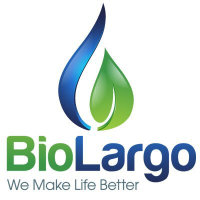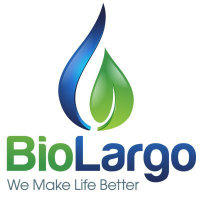
BioLargo Inc
OTC:BLGO


| US |

|
Johnson & Johnson
NYSE:JNJ
|
Pharmaceuticals
|
| US |

|
Berkshire Hathaway Inc
NYSE:BRK.A
|
Financial Services
|
| US |

|
Bank of America Corp
NYSE:BAC
|
Banking
|
| US |

|
Mastercard Inc
NYSE:MA
|
Technology
|
| US |

|
UnitedHealth Group Inc
NYSE:UNH
|
Health Care
|
| US |

|
Exxon Mobil Corp
NYSE:XOM
|
Energy
|
| US |

|
Pfizer Inc
NYSE:PFE
|
Pharmaceuticals
|
| US |

|
Palantir Technologies Inc
NYSE:PLTR
|
Technology
|
| US |

|
Nike Inc
NYSE:NKE
|
Textiles, Apparel & Luxury Goods
|
| US |

|
Visa Inc
NYSE:V
|
Technology
|
| CN |

|
Alibaba Group Holding Ltd
NYSE:BABA
|
Retail
|
| US |

|
3M Co
NYSE:MMM
|
Industrial Conglomerates
|
| US |

|
JPMorgan Chase & Co
NYSE:JPM
|
Banking
|
| US |

|
Coca-Cola Co
NYSE:KO
|
Beverages
|
| US |

|
Walmart Inc
NYSE:WMT
|
Retail
|
| US |

|
Verizon Communications Inc
NYSE:VZ
|
Telecommunication
|
Utilize notes to systematically review your investment decisions. By reflecting on past outcomes, you can discern effective strategies and identify those that underperformed. This continuous feedback loop enables you to adapt and refine your approach, optimizing for future success.
Each note serves as a learning point, offering insights into your decision-making processes. Over time, you'll accumulate a personalized database of knowledge, enhancing your ability to make informed decisions quickly and effectively.
With a comprehensive record of your investment history at your fingertips, you can compare current opportunities against past experiences. This not only bolsters your confidence but also ensures that each decision is grounded in a well-documented rationale.
Do you really want to delete this note?
This action cannot be undone.

| 52 Week Range |
0.177
0.4
|
| Price Target |
|
We'll email you a reminder when the closing price reaches USD.
Choose the stock you wish to monitor with a price alert.

|
Johnson & Johnson
NYSE:JNJ
|
US |

|
Berkshire Hathaway Inc
NYSE:BRK.A
|
US |

|
Bank of America Corp
NYSE:BAC
|
US |

|
Mastercard Inc
NYSE:MA
|
US |

|
UnitedHealth Group Inc
NYSE:UNH
|
US |

|
Exxon Mobil Corp
NYSE:XOM
|
US |

|
Pfizer Inc
NYSE:PFE
|
US |

|
Palantir Technologies Inc
NYSE:PLTR
|
US |

|
Nike Inc
NYSE:NKE
|
US |

|
Visa Inc
NYSE:V
|
US |

|
Alibaba Group Holding Ltd
NYSE:BABA
|
CN |

|
3M Co
NYSE:MMM
|
US |

|
JPMorgan Chase & Co
NYSE:JPM
|
US |

|
Coca-Cola Co
NYSE:KO
|
US |

|
Walmart Inc
NYSE:WMT
|
US |

|
Verizon Communications Inc
NYSE:VZ
|
US |
This alert will be permanently deleted.
 BioLargo Inc
BioLargo Inc
BioLargo Inc
BioLargo, Inc. engages in the provision of technology solutions for odor and moisture control, disinfection, and water treatment. The company is headquartered in Westminster, California and currently employs 27 full-time employees. The firm invents, develops, and commercializes platform technologies to solve environmental problems like polyfluoroalkyl substances (PFAS) contamination, advanced water and wastewater treatment, industrial odor and volatile organic compounds (VOC) control, air quality control and infection control. The company provides sustainable solutions for a range of industries and applications. The Company’s products include Advanced Oxidation System (AOS), Aqueous Electrostatic Concentrator (AEC), CupriDyne Clean industrial odor control product, Clyraguard Personal Protection Spray, and hand sanitizer. The firm provides its products through its subsidiaries, including ONM Environmental, Inc., BioLargo Water, Inc., BioLargo Water Investment Group, Inc., BioLargo Development Corp., BioLargo Engineering, Science & Technologies, LLC and Clyra Medical Technologies, Inc.

BioLargo, Inc. engages in the provision of technology solutions for odor and moisture control, disinfection, and water treatment. The company is headquartered in Westminster, California and currently employs 27 full-time employees. The firm invents, develops, and commercializes platform technologies to solve environmental problems like polyfluoroalkyl substances (PFAS) contamination, advanced water and wastewater treatment, industrial odor and volatile organic compounds (VOC) control, air quality control and infection control. The company provides sustainable solutions for a range of industries and applications. The Company’s products include Advanced Oxidation System (AOS), Aqueous Electrostatic Concentrator (AEC), CupriDyne Clean industrial odor control product, Clyraguard Personal Protection Spray, and hand sanitizer. The firm provides its products through its subsidiaries, including ONM Environmental, Inc., BioLargo Water, Inc., BioLargo Water Investment Group, Inc., BioLargo Development Corp., BioLargo Engineering, Science & Technologies, LLC and Clyra Medical Technologies, Inc.






























 You don't have any saved screeners yet
You don't have any saved screeners yet
